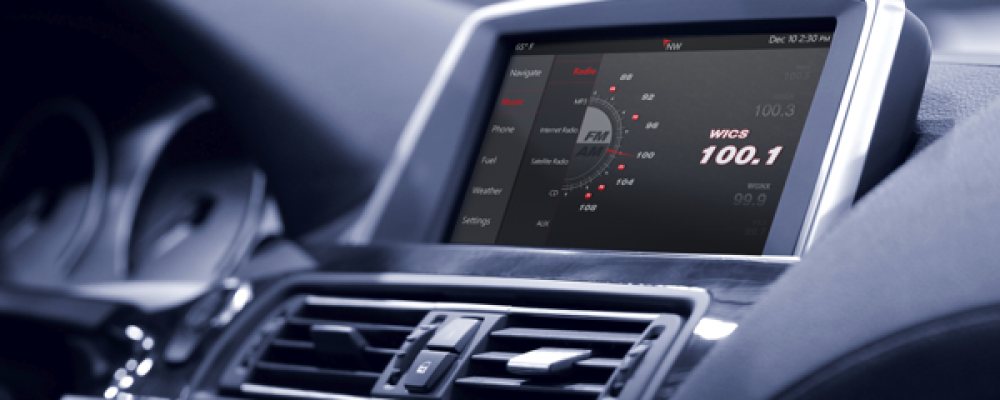
Of Cars and Connectivity: The Next Generation of (IVI) In Vehicle Infotainment
Everyone remembers his or her first car. Mine was a ’72 Pinto that I traded a busted CD player to get. My dad and I pulled a radio out of my brother’s truck so I could have some tunes while cruising. The tape deck occasionally got hungry and needed to be fed a mixed cassette or two to appease its appetite. I’d like to say I look back at it fondly, but I remember a lot of cursing. Fast forward to 2014, we find the field of In-Vehicle Infotainment Systems (IVI) is a lot flashier than when I got my first car, but there still seems to be a lot of cursing involved.
The area of IVI, or more generally the Connected Car (mirrorlink.com)(1), seems poised to be a hot market for 2014 and beyond. Microsoft has been a player since 2007, when Ford deployed the first Sync systems. The idea of seamlessly integrating your smartphone into your car is a very powerful one, giving you access to your phone, music and GPS capabilities in one slick package, ideally with a user interface on par with the latest touch-based tablets. Some forward-thinking manufacturers are already looking way beyond this, to systems connecting your car to intelligent roadways and “smart cities” that work to prevent traffic jams before they happen.
Unfortunately, like many new technologies, the capabilities and the user experience (UX) are often not quite in sync (or in this case, in Sync). For instance, the reviews of the Ford Sync system have been very mixed since rollout, with end user reviews being less than charitable. Granted, all new technologies have to make it from the early adopters that accept the glitches and progress into the hands of the mass market, but the car companies need to pick up the pace. This is the age of the Smartphone, and if you’re going to play the game, the UX for new technologies has to be at least of the same quality that users expect from their handheld devices that cost a fraction of what a new car costs.
The concept of the connected car is amazingly powerful, giving companies like Apple (appleinsider.com)(2) an open window to get into the game. Apple’s CEO, Tim Cook, has already announced that several big names like Mercedes-Benz, Ferrari, and Jaguar have shown an interest for iOS in the Car and are planning integrations for 2014. ABI Research is figuring that half of all IVI systems will be based on iOS in the Car by 2018 (abiresearch.com)(3). Admittedly, when I have my engineer hat on, I’m not a big Apple fan, but from a UX perspective they certainly tend to get things right.
So I find myself going into this year optimistic about the future of infotainment systems. Historically, second generation systems learn from the user interface (UI) mistakes of their predecessors and provide a better user experience for the customer. The latest Honda Civic is already on the streets (gigaom.com)(4) with its first version of their iOS-based HondaLink and other manufacturers shouldn’t be far behind. CES just ended and we have the usual crop of announcements with vendors including QNX, Qualcomm and Intel all getting into the game. I think the future of the connected car looks bright indeed and if the automotive manufacturers of the world can provide us the experience we have come to expect, I think we’ll all enjoy the ride.
Notes:
1. Mirrorlink.com (Car Connectivity Consortium )
2. Appleinsider.com (Why Apple is Revving iOS in the Car for an Aggressive 2014 Launch; Daniel Evan Dilger)
3. ABIresearch.com (Half of all In-Vehicle-Infotainment Systems Equipped with Smartphone Integration Technologies will have Apple’s “iOS in the Car” by 2018
4. Gigaom.com (Honda Revamps its Link Connect Car System, Making it Very iPhone Friendly; Kevin Fitchard)